Read Reviews
The Best Winter Lawn Fertilisers
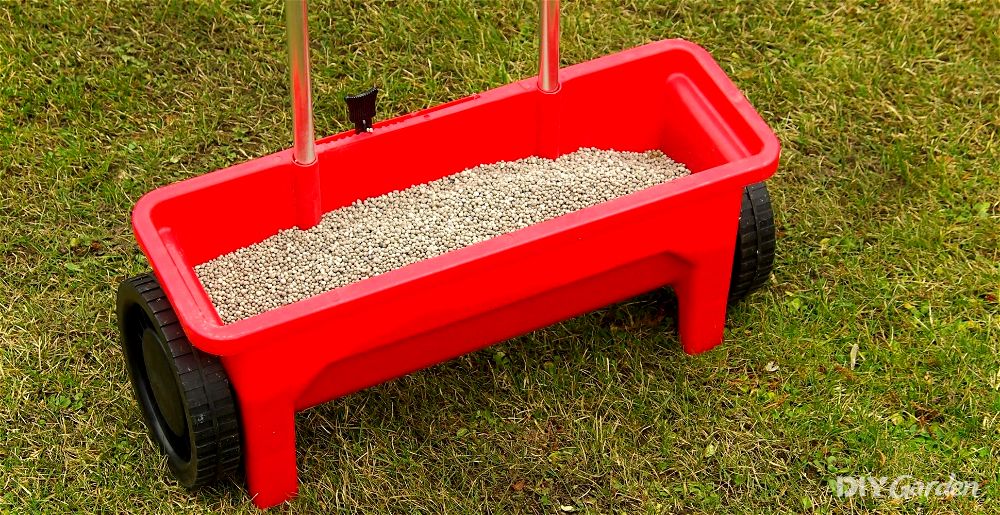
-
Proctors Autumn and Winter Lawn Feed (With Iron)
-
Miracle-Gro EverGreen Autumn Lawn Care
-
Proctors Autumn and Winter Lawn Feed
-
The Grass People Slow Release Autumn Winter Fertiliser
-
Substral Winter Fit Fertiliser
Winter Lawn Fertiliser Reviews
- Increases root strength to create strong, thick grass
- Won’t encourage an unwanted autumn growth spurt
- A good option for large lawns as 20 kg covers up to 570 m²
- Granules are relatively uniform and go through a spreader easily
- Not always completely effective at removing moss from lawn
- No information included in instructions about ideal spreader aperture settings
Proctors Autumn and Winter Lawn Feed helps out with two things that frequently cause problems in the garden during winter – grass that won’t grow, and moss that grows too much. It’s a tough balance!
It can be applied during both autumn and winter to help improve grass coverage without causing any undesired growth spurts. The slow-release fertiliser has a low nitrogen content, combined with a higher concentration of phosphorous and potassium; it thickens patchy lawns and creates a strong carpet of grass without wasting energy on excessive growth.
The fertiliser contains seaweed which is a natural source of phosphorous and known to assist with soil aeration – improving drainage and avoiding problems associated with damp soil. In turn this improves the strength of roots, and the health of grass.
Coming in a 20 kg bag, you get plenty of fertiliser for quite a reasonable price – especially considering that it should be applied at a rate of 35 g/m². When applied carefully, one bag can cover an area of approximately 570 m² (for reference: a standard tennis court is 261 m²).
The granules are a reasonably uniform size, which helps achieve an even distribution when using a spreader – they don’t clog the machine. Unlike some fertilisers, this product doesn’t scorch the grass either, which is likely thanks to how easy it is to evenly apply.
It does need to be well watered to see good effects though.
Unfortunately, despite this fertiliser’s iron content, it’s a bit hit and miss when it comes to attacking moss. Some customers have reported a large amount of moss being killed off by the product, whilst others haven’t had as much success. When used to treat moss, it needs to be applied at a higher concentration – 50 g/m².
This is one of the best winter lawn fertilisers overall, thanks to how effectively it can help grass grow over winter. It can also be used up to every six weeks throughout the year, so there’s no need for any to go to waste.
Did you find this review helpful?
- Can start to fill in grass and improve coverage after just one week
- Works well to fill in patchy areas to create a more balanced lawn
- Contains no weed killer so not a problem if it makes contact with other plants
- Also helps to kill off moss and turns it black
- Needs to be thoroughly watered in which can involve watering by hand if not enough rain is forecast
- Even spreading is required otherwise the fertiliser can scorch grass
When it comes to garden care, Miracle-Gro have been creating reliable products for over 150 years; their EverGreen Autumn Lawn Care is a basic yet effective fertiliser that also offers good value for money.
One 12.6 kg bag covers approximately 360 m² (when applied at a rate of 35 g/m²), which is plenty of product for most standard gardens (if you’d like a more accurate reference – 360 m² is about the same size as twenty parking spaces!).
This is a reasonably quick-working fertiliser, with results visible in as little as one week. It has an NPK ratio of 6-5-10 which results in a lawn that grows thicker, and achieves better coverage, without having a growth spurt.
It should ideally be applied between September and November, with a maximum of two applications per year.
If you have bare patches on the grass, and it’s coming up to winter, this is a good product to use to fill in the spaces and get a more even, balanced lawn without waiting until spring to fix the problem.
It’s best applied with a rotary spreader – a drop spreader can result in uneven application which may in turn cause burnt patches to appear on the lawn.
One thing to note: if there’s no rain forecast, you’ll need to make sure to fully water in the fertiliser yourself. It takes a while, and a fair amount of water, for the granules to dissolve.
This is one of the most reliable winter fertilisers, and it’s the best winter lawn fertiliser if you’re looking for value for money as well. As long as it is applied evenly, it’s a great option for filling in patchy, sparse areas of grass.
Did you find this review helpful?
- Three applications in winter can boost lawn's health by springtime
- Creates stronger grass that can help crowd out other unwanted species like clover
- Some results can be visible within a few weeks of using the fertiliser
- Can be stored and kept for use in the following year
- Minimal instructions included so some guesswork required when using spreaders
- Requires a lot of watering in to dissolve the granules - will need to be done by hand if not enough rain
There are two types of Proctors Autumn/Winter fertiliser on this page, each with slightly different properties, suitable for different types of lawn. This particular Autumn and Winter Lawn Feed has an NPK ratio of 3-10-5 meaning it’s very high in phosphorous and slightly more balanced when it comes to nitrogen and potassium.
This is especially useful if the soil in your garden is naturally lacking in phosphorous; phosphorous helps improve root growth and strength.
Proctor’s Autumn and Winter Lawn Feed can be spread from September onwards and makes a visible difference to the density and quality of the grass in this time. Approximately three applications across winter seems to work well. If your lawn is looking tired and patchy as winter moves in, this is one of the best winter lawn fertilisers to achieve a much healthier looking lawn come springtime.
The fertiliser consists of relatively fine granules, so it can be a case of trial-and-error to make sure that they are applied at the recommended amount of 35 g/m². If you are using a spreader that is intended for larger granules, you will need to reduce the aperture accordingly.
When applied correctly, the 20 kg bag can cover an area of approximately 570 m².
Although you may not use such a large bag over one winter, the fertiliser can be kept for the following year as well. It needs to be kept well sealed in a cool, dry space.
A final thing of note about this product is the packaging – unlike a lot of brands that don’t seem to put much thought into their plastic packaging, Proctors have used a bag that is designed to biodegrade. It contains recycled plastic, and materials from renewable sources.
Did you find this review helpful?
- Helps prevent winter borne diseases such as Red Thread
- Can be kept to up to four years once opened
- High potassium content to improve grass resilience to weather and disease
- Improves the overall appearance of the lawn
- Results slower than other fertilisers - you may not notice any changes until spring
Helping to protect grass health over the winter months, The Grass People Slow Release Autumn/Winter Fertiliser is designed to combat the damaging effects of disease and frost. The aim is to preserve the appearance of the lawn until spring (or whenever the weather actually starts to warm up; we all know how unpredictable our UK climate can be!).
With an NPK ratio of 8-0-6, this is a low-phosphorous, high-nitrogen/potassium formula. Potassium is useful in autumn to improve the strength and resilience of plants, whilst nitrogen is more commonly used in spring to help with growth and the lush green appearance of the grass.
Together, these result in a product that can be used several times over autumn and winter to prepare grass in different ways for spring.
Whilst 0% phosphorous might seem unusual, some gardeners prefer to avoid fertilisers containing phosphorous to avoid excessive use. Too much phosphorous in the soil can cause problems.
The overall effect of this fertiliser is grass that grows in thicker and greener. You just need to make sure it is applied during times when the grass is still growing – if the temperatures drop too much, and the grass goes dormant, the fertiliser will make no difference.
It comes as a 20 kg bag and should be applied at a density of 35 g/m². This is best achieved using a spreader, rather than attempting to get the measurements right by hand. At this application rate, one bag will cover approximately 570 m².
According to the manufacturer, once opened, the fertiliser can be kept for up to four years as long as it is kept sealed in a cool, dry space. For this reason, and because of its nitrogen and potassium content, this is one of the best winter lawn seeds to keep and use during any time of year. In winter, the potassium will help improve grass strength, and in the growing season the nitrogen will boost growth and health.
Did you find this review helpful?
- Granules can be applied using a spreader
- A good option for small gardens - one bag covers up to 100 m²
- Contains potassium to improve grass strength and resilience over winter
- Good budget option for those who don't require a large quantity of product
- One box is unlikely to be sufficient for larger gardens
If you have a smaller garden, or are working on a tighter budget, the Substral Winter Fit Fertiliser is a cheaper alternative to the other products on this page.
Sold in a 2 kg box, this granular fertiliser covers an area of approximately 100 m². The instructions state that should generally be applied at a density of 20 g/m². For areas that need more attention, this can be increased up to 30 g/m².
It contains nitrogen and potassium, helping grass to stay resilient and strong over winter. In particular, potassium is useful to help grass withstand the damaging effects of frost and disease over the colder months.
This product is best suited to being applied towards the end of summer and during autumn to give grass the strength to endure winter. It can also help repair damage after a harsh summer, with the nitrogen encouraging grass to grow following any drought or excessive trampling.
According to Substral, the slow-release granules stay active for approximately 100 days, meaning they are constantly adding nutrients to the soil.
Overall, it’s one of the best winter lawn fertilisers to buy on a budget. You get a generous amount of product for the price, and it will be sufficient to cover the majority of small/medium gardens.
You may need a second box if you are covering a larger area, or applying the fertiliser using the higher concentration. Nevertheless, it will probably still work out cheaper than buying other products, which is great if that’s what you’re looking for.
Did you find this review helpful?
How to Choose the Best Winter Lawn Fertiliser
A pristine lawn requires year-round care and maintenance, and a winter lawn fertiliser can help give your grass the boost it needs when the temperature drops.
It’s recommended that you fertilise your lawn at least twice a year: once in the spring, and again in the autumn/winter. Springtime fertilisers contain a different composition of nutrients to winter fertilisers, which is why it’s important to use different products. A winter lawn fertiliser will contain ingredients that have been specifically chosen to protect your lawn from harsh winter weather, helping to prepare it for growth in the springtime.
Choosing the best lawn fertiliser will depend on the current state of your lawn, as well as what your grass needs. We’ve put together the following information so you’ll have a better idea of what to look out for:
READ NEXT: The Best Fertiliser Spreaders
‘NPK Ratios’ – Why Are They So Important?
You may have seen the initials ‘NPK’ when looking at different fertilisers. These letters represent three elements. N stands for ‘nitrogen’, P for ‘phosphorous’ and K for ‘potassium’. These nutrients are vital for different stages of plant growth, and different fertilisers contain different ratios of them.
The ratio will be written as three numbers, for example: ‘NPK 6-5-10’. This fertiliser would be made up of 6 parts nitrogen, 5 parts phosphorous and 10 parts potassium.
Depending on your grass type, lawn condition, and the time of year, your lawn will benefit from higher concentrations of certain elements than others.
Below, you’ll find more details of each element and which part of grass development it contributes to. This will help you choose the right fertiliser, with the best NPK ratio, for your garden.
Nitrogen
Nitrogen is pretty vital during all stages of a plant’s growth. It’s one of the main components of chlorophyll, which helps plants convert the sun’s energy into food. Chlorophyll is also responsible for giving plants their green colour, so nitrogen can help grass get greener and healthier.
Nitrogen is also important for a plant’s growth. Fertilisers that are applied at the start of the growing season, in springtime, often have a high ratio of nitrogen in order to encourage plants to grow.
Generally, it’s less important to feed plants high amounts of nitrogen during winter because the focus is not on creating growth spurts, but conserving strength and making strong root systems that will survive the winter.
Phosphorous
Phosphorous also plays a part in helping plants to convert the sun’s energy into food and energy. It is particularly useful for improving the strength of a plant’s root system, as well as its stem.
Phosphorous is integral for general plant health; if plants aren’t healthy, they will grow slowly and take a long time to mature. Naturally, this will also make them weaker.
For these reasons, phosphorous is absolutely crucial to the development of grass. In some areas, the soil lacks phosphorous. In lawns, this will result in a weak root system and grass that will not withstand poor conditions – such as harsh winters.
However, too much phosphorous in soil can also be problematic. Phosphorous can build up in the soil, and excessive amounts reduce a plant’s ability to take other vital nutrients from the soil. This is one of the reasons why it’s important not to overdo it on the phosphorous front.
It is less common to find soil that is deficient in phosphorous than it is to find soil that is deficient in nitrogen. As a result, even some fertilisers that are aimed at winter use do not contain a high concentration of phosphorous (and some contain none at all).
Potassium
As well as aiding with photosynthesis, potassium helps plants store and use water efficiently; it can help make them less susceptible to drought.
Also, similarly to phosphorous, it helps plants grow a strong, extensive root system – very important for helping grass to endure the harsh conditions of winter.
READ NEXT: The UK’s Best Lawn Feed
The Best NPK Ratio for Winter Fertiliser
A high nitrogen content is less important for winter fertiliser. However, grass still requires some nitrogen for promoting normal functions and it is not always present in the soil in high amounts – this is why most winter fertilisers still contain a reasonable amount of nitrogen. If you’re hoping to find a fertiliser that will be useful year-round, you will want a slightly higher ratio of nitrogen compared to if you’re using a separate fertiliser for winter and spring (recommended).
Not all fertilisers contain phosphorous, as too much phosphorous in the soil can actually build up and have a negative impact on the environment and plants. If your soil has a phosphorous deficiency, your grass will require a fertiliser with phosphorous. If not, you may want to avoid adding too much.
Potassium is an extremely useful nutrient, especially beneficial to grass over winter, because it helps grow strong roots and stems. Looking for a relatively high potassium ratio in a winter fertiliser is a good idea.
You may want to test your soil to find out what the current nutrient levels are, for a better idea of which what nutrients you need to add to the soil. There are several laboratories that you can send a sample of your soil to for testing. Remember that nutrients get used up, so the soil’s properties can change over time.
READ NEXT: The Best Lawn Aerators
Liquid vs Granular Fertiliser
Fertiliser comes in either liquid or granular form.
Liquid feed is either a concentrate that can be added to water, or it’s pre-made. This fertiliser is generally fast acting and can be applied to the lawn using a watering can.
When using a liquid fertiliser, you want to make sure that it won’t get washed away before it has time to work. For this reason, liquid fertilisers can be better suited to summer rather than winter use – you’ll need a period without rain.
Granular fertilisers are applied dry and then watered into the soil. To apply a granular fertiliser properly, you should use a fertiliser spreader. These can either be simple handheld tools, or more complicated push-along/tow-along contraptions. Spreaders help ensure the correct distribution rate, which is a lot harder to calculate when spreading by hand.
Granular fertilisers are generally slow acting. They sit on the soil and slowly dissolve, gradually releasing the nutrients into the ground. They need to be thoroughly watered in order to dissolve. For this reason, it’s good to apply them when rain is forecast (which can be handy in winter). Otherwise, you’ll need to water the fertiliser daily until the granules are no longer visible.
With either fertiliser, you should avoid applying it on a windy day as this can cause uneven application.
Winter Lawn Fertiliser FAQs
It’s best to apply winter fertiliser between early September and November. It makes the most sense to apply it around this time because you need to put it down whilst the grass is still growing. Once the temperatures go too low, the grass will go dormant and the fertiliser will have no effect.
Ideally, you want at least a month of active grass growth after applying the fertiliser, before the very cold temperatures hit.
In the UK, the colder temperatures are coming later and later. September and October are often very mild. This means you can sometimes get away with fertilising a lot later – even into December. You should still try to do it before winter fully sets in.
Granule fertiliser is best applied using a rotary spreader. You can also use a drop spreader, but you must be careful to get the rate of application right; if you get too high a concentration of fertiliser in one area, it can scorch the grass.
A spreader will have an aperture opening, which can be adjusted to change the rate of fertiliser application. A lot of fertilisers need to be applied at a concentration of 35 g/m²; however, this is not the same for all fertilisers and you should check the specific instructions carefully.
After spreading the granulated fertiliser at the recommended concentration, you will need to water it regularly. If it’s scheduled to rain over the next few days, you will not need to water by hand. Either way, you should keep an eye on the granules and make sure they are kept wet until they have entirely dissolved.
Depending on which fertiliser you purchase, it can last for several years in storage. As a general rule, try to use up any fertiliser within four years of opening it. Granules need to be kept dry, and liquid fertiliser needs to be properly sealed. Four years is a good guideline because the more time that goes on, the more likely the product is to become susceptible to damp or damage, especially as the packaging may start to degrade.
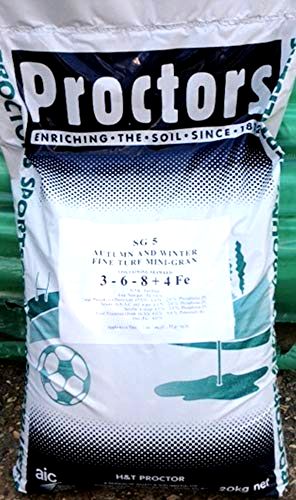
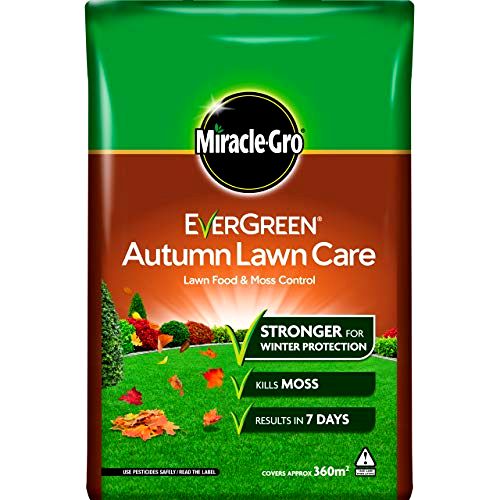
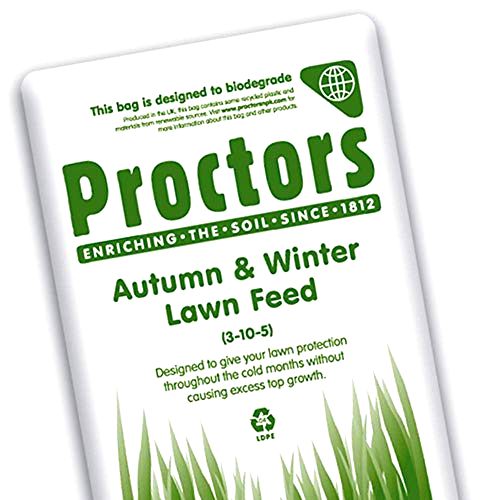
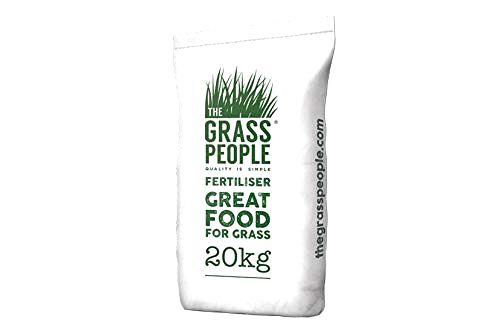


Share